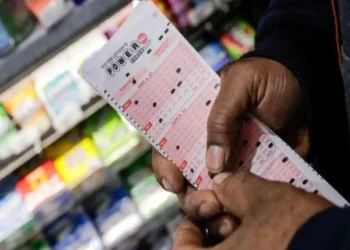In a landmark policy reversal, the World Bank has lifted its long-standing ban on financing nuclear power projects in developing countries. This decision marks a significant change in the bank’s approach to energy development and sustainability, as it acknowledges the pressing need for cleaner, reliable, and large-scale energy solutions in the Global South.
The announcement was made by Ajay Banga, President of the World Bank, in an internal email sent to staff. According to Banga, this policy shift is part of a broader strategy aimed at helping developing nations meet surging electricity demands, achieve climate targets, and support long-term economic development.
Historical Context: The World Bank’s Stance on Nuclear Energy
The World Bank had halted financing for nuclear energy projects more than a decade ago, citing concerns over cost, safety, waste management, and geopolitical risks. In 2013, the institution officially stopped funding nuclear-related infrastructure in low- and middle-income countries. The policy reflected a broader global sentiment at the time, especially in the wake of the Fukushima disaster in 2011, which raised worldwide apprehensions about nuclear safety.
Further cementing its environmentally-focused direction, the bank in 2017 announced it would cease investing in upstream oil and gas projects by 2019, reinforcing its commitment to cleaner, more sustainable energy systems. Despite this, the bank continued to consider certain gas projects in low-income and energy-poor countries due to their immediate energy needs and lack of alternatives.
What Prompted the U-Turn?
The decision to reintroduce nuclear energy into the World Bank’s financing portfolio was driven by a convergence of global realities:
- Surging electricity demand in the developing world: According to Ajay Banga, electricity demand in developing countries is expected to double by 2035.
- Global push for decarbonization: As the world seeks to phase out fossil fuels, nuclear power is gaining renewed attention as a zero-emissions energy source that can operate around the clock.
- Technological advancements: Innovations such as Small Modular Reactors (SMRs) offer safer, cheaper, and more flexible nuclear energy options, especially suitable for developing nations.
- Grid modernization and energy diversification: Developing countries need to diversify their energy mix to ensure grid stability, energy independence, and resilience against climate change.
Board-Level Deliberations and Ongoing Debates
The decision followed what was described as a constructive discussion among the World Bank’s Board of Executive Directors. While the board reportedly reached broad consensus on lifting the nuclear energy ban, there was no complete agreement on resuming financing for upstream natural gas projects.
According to insiders, Germany, France, and the United Kingdom have adopted a cautious approach to funding upstream gas projects due to environmental concerns and Europe’s push for renewable energy. In contrast, some developing countries, especially in Sub-Saharan Africa and South Asia, are advocating for more gas projects as transitional solutions to alleviate energy poverty.
This divergence reflects the broader energy transition debate — how to balance climate goals with development needs.
Electricity Demand: A Looming Challenge
President Ajay Banga warned that to keep up with projected energy demand, the developing world will need to double its annual energy investment — currently around $280 billion. Without significant investments in baseload power sources like nuclear, many countries may fall short of their sustainable development goals (SDGs), particularly in the areas of industrial growth, public health, and education.
Banga’s message underscores that renewables alone may not be sufficient to meet global energy needs. While solar and wind are crucial parts of the transition, they are intermittent by nature and require complementary base-load energy sources like nuclear to ensure stable supply.
Strategic Partnership with the IAEA
To address concerns surrounding nuclear safety, non-proliferation, and regulatory compliance, the World Bank has announced it will closely collaborate with the International Atomic Energy Agency (IAEA). This partnership will aim to:
- Ensure safety standards in new and existing nuclear facilities.
- Support regulatory frameworks that align with international best practices.
- Monitor and enforce non-proliferation commitments to prevent the misuse of nuclear materials.
This collaborative framework aims to build global confidence in the safe and peaceful use of nuclear energy, especially in politically fragile regions.
Future Investments: Life Extension, Grid Upgrades, and SMRs
As part of its revised energy strategy, the World Bank also plans to support:
- Extending the service life of existing nuclear reactors in developing countries.
- Modernizing power grids to accommodate a diversified energy mix, including nuclear and renewables.
- Research and development of Small Modular Reactors (SMRs) — compact, next-generation nuclear reactors that are seen as a game-changer for low-capacity grids.
SMRs offer several advantages:
- Lower capital costs compared to traditional nuclear plants.
- Enhanced safety features and passive cooling systems.
- Modular scalability for rural and off-grid applications.
These advancements could be pivotal in enabling smaller, poorer nations to adopt nuclear energy without the massive upfront investment traditionally required.
Global Implications and Reactions
Reactions from Climate Advocates and Industry
Climate advocates have had mixed reactions to the World Bank’s decision. Some praised it as a pragmatic shift recognizing that net-zero carbon goals cannot be achieved without nuclear power. Others have expressed concern over the risks of nuclear waste, safety, and cost overruns, calling instead for more aggressive investments in renewables and energy storage technologies.
Meanwhile, the nuclear industry has welcomed the move. Several companies working on SMRs and next-gen nuclear technologies see this as an opportunity to expand into new markets, with the potential for public-private partnerships supported by World Bank loans and technical assistance.
Geopolitical Dynamics
The decision also carries geopolitical implications. Countries like Russia and China, which already export nuclear technology to developing nations, may now face increased competition from Western-backed initiatives supported by the World Bank. This shift could rebalance influence in key regions like Africa, Southeast Asia, and the Middle East.
Conclusion: A Balanced Path Toward Energy Security and Climate Goals
The World Bank’s decision to lift the ban on nuclear power for developing countries marks a strategic turning point in global energy policy. By embracing nuclear alongside renewables, the bank acknowledges the complex realities of development, climate change, and energy equity.
While challenges around financing, regulation, and public perception remain, the move signals a willingness to adopt holistic energy solutions that meet the needs of both people and the planet.
As Ajay Banga noted, the world’s poorest nations cannot be left behind in the clean energy transition. With electricity demand set to double by 2035, enabling access to safe, clean, and reliable power is not just a policy goal — it is a moral imperative.

























